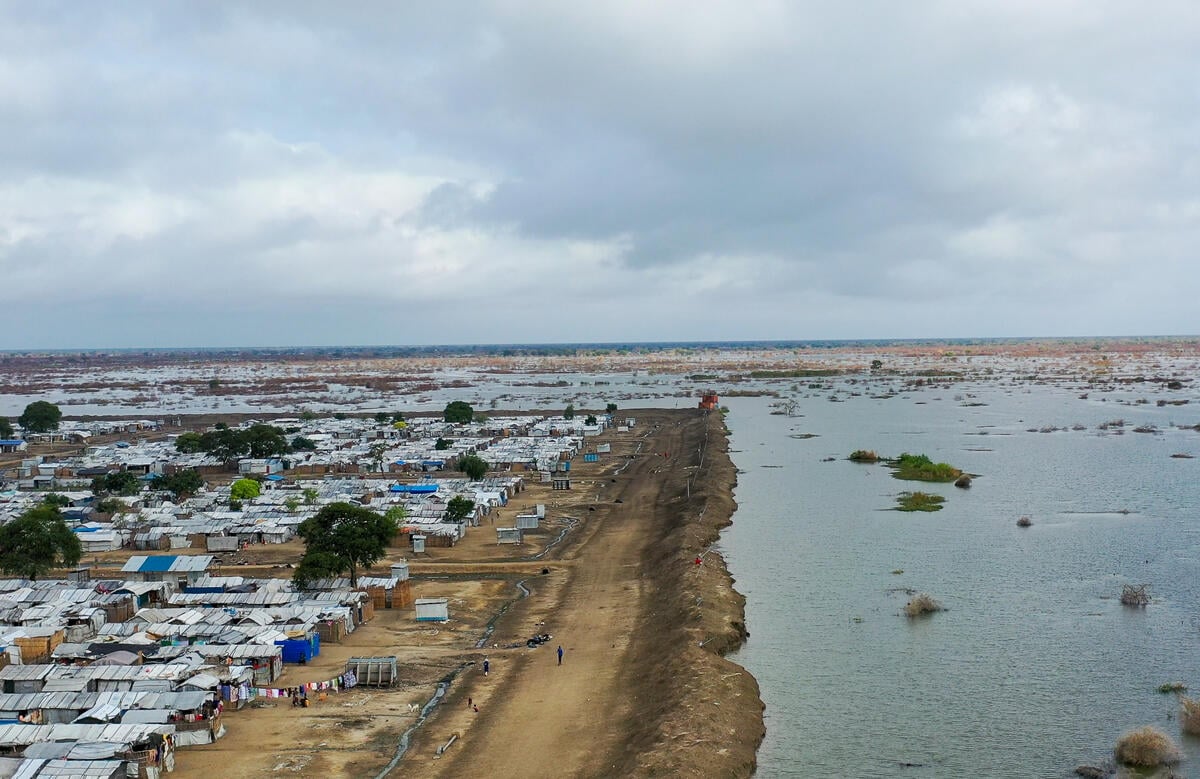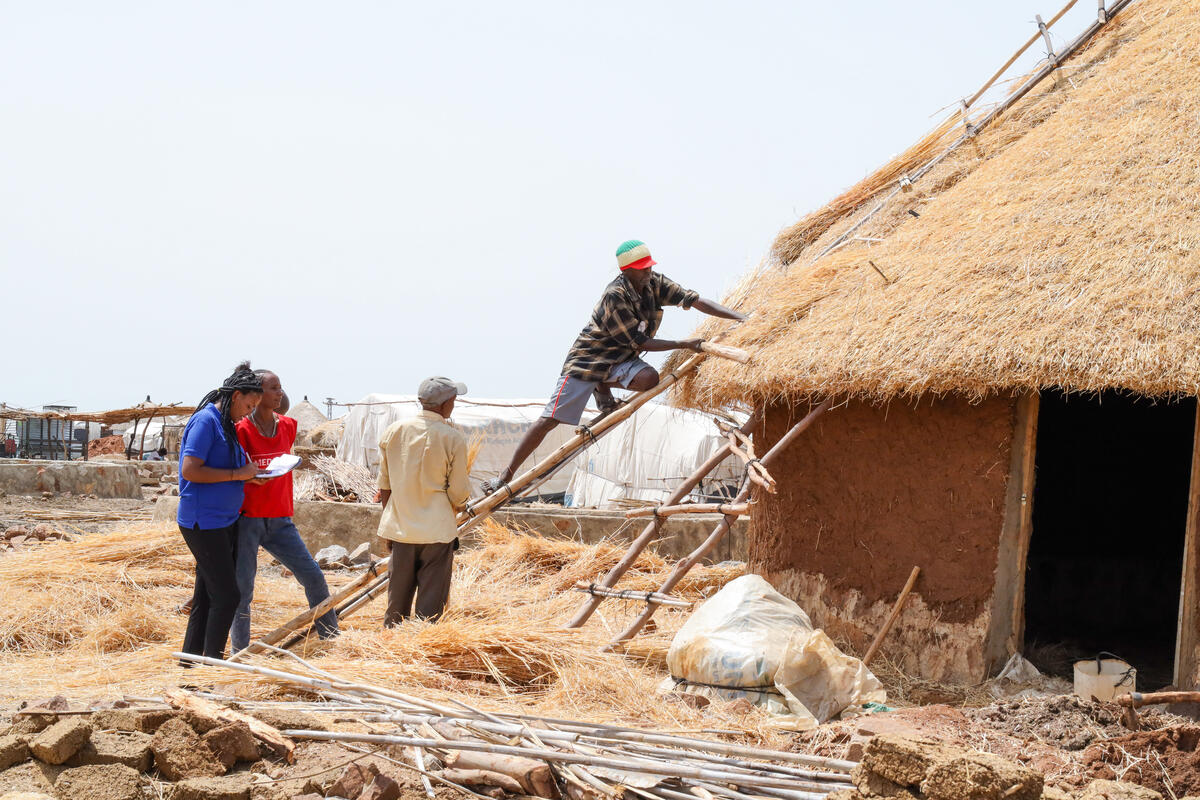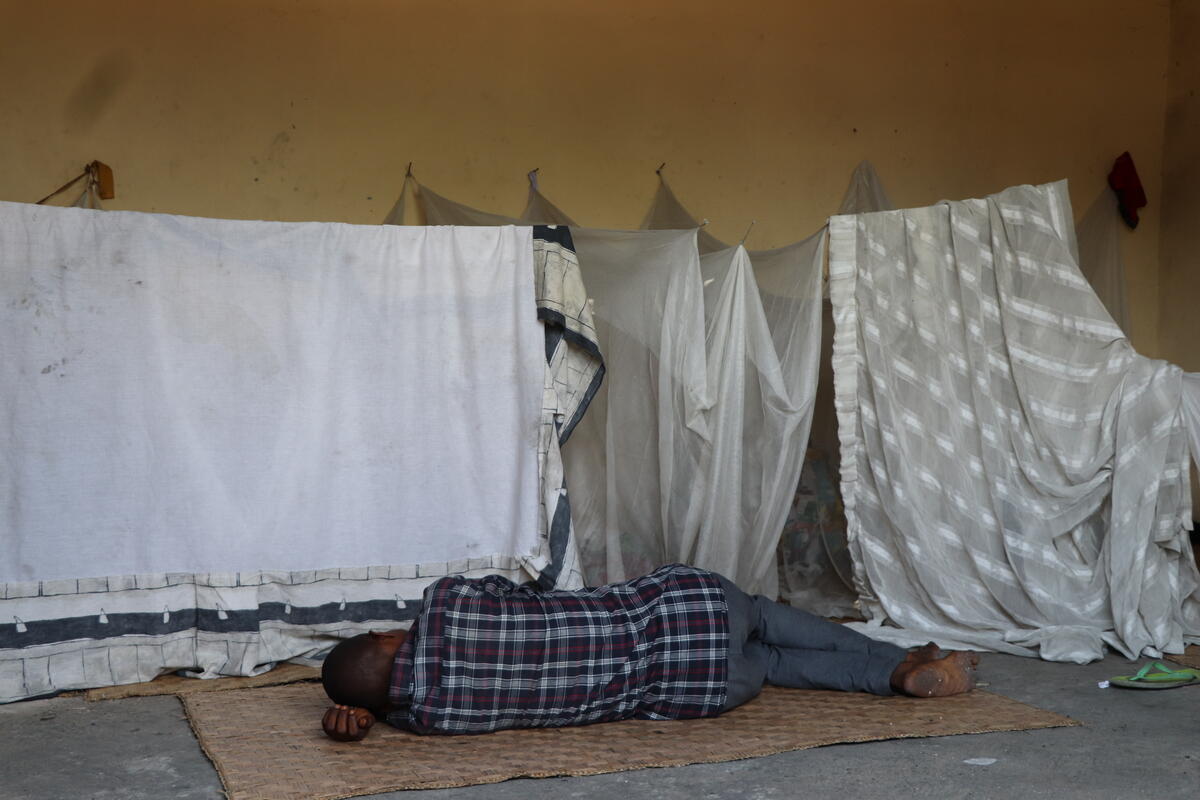UNHCR returns to Indonesia's Aceh province to provide shelter assistance
UNHCR returns to Indonesia's Aceh province to provide shelter assistance

JAKARTA, June 27 (UNHCR) - The government of Indonesia announced on Saturday that the UN refugee agency had been invited to return to Indonesia's Aceh province to assist in providing shelter as part of the longer-term tsunami emergency rehabilitation effort.
The announcement was made at a ceremony outside a mosque in Ulee Lhee, near the provincial capital Banda Aceh, on the eve of the six-month anniversary of the devastating tsunami that hit the west coast of Sumatra island in Indonesia, among other countries in the Indian Ocean.
"We would like to thank the world, all volunteers, everybody - black, white, short, tall, men and women - for their assistance," Kuntoro Mangkusubroto, the head of Rehabilitation and Reconstruction Agency for Aceh and Nias (BRR), told aid workers, residents and reporters on Saturday. They were surrounded by debris as the mosque was the only building left standing in the area after the tsunami.
"Today is an important day for us to start rebuilding houses and settlements," he said. "UNHCR has already made a valuable contribution to the relief effort in the area of temporary shelter and non-food items, and is helping to source additional tents in Nias and to replace older tents in Aceh. Now UNHCR and RedR Australia technical experts will also help provide permanent housing for those who need a place to live."
Previously, the UN refugee agency had completed its emergency operation and withdrawn from Aceh province on March 25 ahead of a government review and rationalisation of humanitarian aid effort to the tsunami-stricken province.
On June 10, UNHCR signed an agreement with Indonesia, and sent a small team to Aceh to prepare the ground for the arrival of technical experts from RedR Australia, a non-governmental organisation that provides the refugee agency with technical experts in shelter and engineering. They will work alongside the provincial authorities and BRR.
In this phase of the emergency rehabilitation, UNHCR will focus its efforts on meeting the need for shelter rehabilitation mainly along a 200-km stretch of the west coast of Aceh that was severely damaged by the tsunami. The shelter activities will revolve around an integrated community rebuilding approach, with a pilot project in the village of Kreung Sabe where almost half of the population was swept away by the tsunami and 4,000 people displaced.
UNHCR's Representative in Indonesia, Robert Ashe, said the agency plans to build 1,000 houses in the pilot project at Kreung Sabe.*
"What's most important is that we can really help all these displaced people who, six months after the tsunami, need shelter and community life," added UNHCR's Asia Pacific bureau director in Geneva, Janet Lim. "At the same time, we are now able to fulfil our obligations to all the donors who gave so generously to UNHCR for our tsunami relief operation."
As part of the UN Flash Appeal for the Indian Ocean tsunami, UNHCR asked for US$60 million for Indonesia, and has received $23 million. In addition, $13 million has been made available for UNHCR's overall tsunami disaster relief programme, and a good part of this fund is expected to be allocated to the Indonesia project. Of these funds, UNHCR has so far spent some $9 million on the initial emergency phase of the tsunami relief effort, including aid to Nias island after a major earthquake on March 28.

UNHCR's operational response to the catastrophic tsunami disaster was unprecedented, as its mandate is to protect refugees fleeing violence and persecution. However, given the enormous scale of the disaster, it was rapidly asked to join the UN humanitarian response and quickly mounted a programme to provide shelter and relief items to some 100,000 people along the west coast of Indonesia.
By Jennifer Pagonis
* Clarification (added June 29): On January 27, it was reported that UNHCR would build 1,000 houses in the second phase of emergency rehabilitation in Aceh. This pilot project in Kreung Sabe village is part of a larger UNHCR shelter assistance programme for which the agency is still assessing housing needs in the tsunami-hit province.








